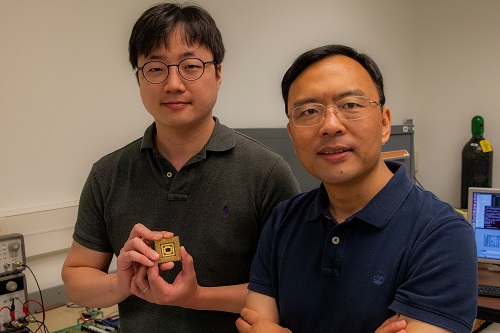First memristor computer
Deep learning has created shockwaves in machine learning communities due to its unparalleled performance. It can be easily applied in any field without any specialized knowledge in the field. This was not possible earlier since building feature extractors require domain specific knowledge. But with deep learning features are learned automatically from available data. This lead to adaptation of deep learning in vast number of fields.
However complex deep learning network are computer expensive and memory hungry. Memristors are seen as a good alternative to solve this issue early in the area. Memristors are considered the missing circuit element which complete the relationship table between voltage-flux and current-charge.
It is challenging to combine memristors and CMOS in single silicon chip due to process limitations. However researches have worked on solving these issues for years which leads to the first memristor computer chip by Wei Lu of the University of Michigan and collaborator Seung Hwan Lee, an electrical engineering PhD student. At maximum frequency the chip consumes 300mW and provide 188 GFOPS computing power. Although this falls far from the performance of state of the art Nvidia GPUs which provides 9090 GFLOPS/W, it sheds light on the exploration of alternative computing technology. We look forward to see next generation memristor computers which may beat the conventional GPU technologies.

Wei Lu and Seung Hwan Lee with memristor computer (Photo credits : Robert Coelius/Michigan Engineering Communications & Marketing )

Leave a Reply